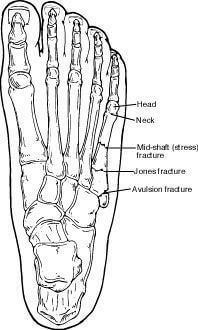What is Hallux Rigidus?
Hallux Rigidus is a disorder of the joint located at the base of the big toe. It causes pain and stiffness in the joint, and with time it gets increasingly harder to bend the toe. “Hallux” refers to the big toe, while “rigidus” indicates that the toe is rigid and cannot move. Hallux rigidus is actually a form of degenerative arthritis.
This disorder can be very troubling and even disabling, since we use the big toe whenever we walk, stoopd down, climb up or even stand. Many patients confuse hallux rigidus with a bunion, which affects the same joint but they are very different conditions requiring different treatment.
Because hallux rigidus is a progressive condition, the toe’s motion decreases as time goes on. IN its earlier stage, when motion of the big toe is only somewhat limited, the condition is called “hallux limitus.” But as the problem advances, the toe’s range of motion gradually decreases until it potentially reaches the end stage of “rigidus,” in which the big toe become stiff, or what is sometimes called a “frozen joint.”
Causes
Common causes of hallux rigidus are faulty function (biomechanics) and structural abnormalities of the foot that can lead to osteoarthritis in the big toe joint. This type of arthritis – the kind that results from “wear and tear” – often develops in people who have defects that change the way their foot and big toe functions. For example, those with fallen arches or excessive pronation (rolling in) of the ankles are susceptible to developing hallux rigidus.
In some people, hallux rigidus runs in the family and is a result of inheriting a foot type that is prone to developing this condition. IN other cases, it is associated with overuse – especially among people engaged in activities or jobs that increase the stress on the big toe, such as workers who often have to stoop or squat. Hallux rigidus can also result from an injury, such as stubbing your toe. Or it may be caused by inflammatory diseases such as rheumatoid arthritis or gout. Your foot and ankle surgeon can determine the cause of your hallux rigidus and recommend best treatment.
Symptoms
- Early signs and symptoms include:
- Pain and stiffness in the big toe during use (walking, standing, bending, etc.)
- Pain and stiffness aggravated by cold, damp weather
- Difficulty with certain activities (running, squatting)
- Swelling and inflammation around the joint
As the disorder gets more serious, additional sypmtoms may develop, including:
- Pain, even during rest
- Difficulty wearing shoes because bone spurs (overgrowths) develop
- Dull pain in the hip, knee, or lower back due to changes in the way you walk
- Limping (in severe cases)
Diagnosis
The sooner this condition is diagnosed, the easier it is to treat. Therefore, the best time to see a foot and ankle surgeon is when you first notice symptoms. If you wait until bone spurs develop, your condition is likely to be more difficult to manage.
In diagnosing hallux rigidus, the surgeon will examine your feet and move the toe to determine its range of motion. X-rays help determine how much arthritis is present as well as to evaluate any bone spurs or other abnormalities that may have formed.
Nonsurgical Treatment
In many cases, early treatment may prevent or postpone the need for surgery in the future. Treatment for mild or moderate cases of hallux rigidus may include:
Shoe modifications. Shoes with large toe box put less pressure on your toes. Stiff or rocker-bottom soles may also be recommended.
Orthotic devices. Custom molded prescription orthotic devices may improve foot function.
Medications. Oral nonsteroidal anti-inflammatory drugs (NSAIDs), such as ibuprofen, may be recommended to reduce pain and inflammation.
Injection therapy. Injections of corticosteroids may reduce inflammation and pain.
Physical therapy. Ultrasound therapy or other physical therapy modalities may be undertaken to provide temporary relief.
When is surgery needed?
In some cases, surgery is the only way to eliminate or reduce pain. There are several types of surgery for treatment of hallux rigidus. In selecting the procedure or combination of procedures for your particular case, the foot and ankle surgeon will take into consideration the extent of your deformity based on the x-ray findings, your age, your activity level, and other factors. The length of the recovery period will vary, depending on the procedure or procedures performed.




 What is a Fifth Metatarsal Fracture?
What is a Fifth Metatarsal Fracture?
